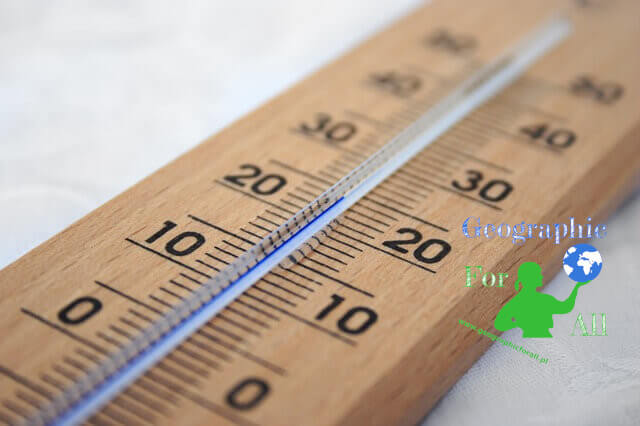Temperature is one of the physical quantities describing the average amount of kinetic energy of motion and vibration of molecules in the sample under test. That is all the scientific and not very student-friendly definition of temperature. More vividly it can be described as the amount of heat generated by colliding or rubbing molecules. However, it is much more interesting to use this in practice and temperature records.
Temperature – scales and measurement
As a reminder, the air temperature is measured at a height of 2 meters above the ground, in the shade, in a ventilated and roofed place. Celsius assumed the melting point of ice as zero, while Kelvin defined the point where there is no thermal movement of particles as (-273.2 degrees C). And a quick conversion formula:
The Kelvin scale is adopted in the SI system and used mainly in science and technological processes.
Let’s not forget about Mr. Fahrenheit, whose scale is still used in the States, Bahamas, Cayman Islands and Belize:
so if you are landing in Chicago and hearing about 30 degrees, you should wear a jumper (-1.11 °C) rather than a bikini.
From here it is easy to calculate that e.g.
- absolute zero is 0 K, but -273,15 °C and -459,67 °F
- Fahrenheit’s zero is 255,37 K and -17,78 °C
- the freezing point of water is 273,15 K and 32 °F
- standard human body temperature is 309,8 K; 36,6 °C and 98,2 °F
- water boils in 373,15 K and 212 °F
Positive temperature records
Let’s start with more pleasant records, so warmer ones. We take into account those officially measured.
- highest air temperature normal measurement
- Al – Zazizijja in Libya – 57,8 °C – 1922 (source)
- Death Valley in the USA – 56,7 °C – 1913
- the highest air temperature on the ground – the Dasht-e Lut Desert in Iran – 70 °C – 2005
- the highest air temperature in Europe – Athens in Greece – 48 °C – 1977
- the highest air temperature at the poles – station near Lake Vanda, Antarctica – 15 ° C – 1974 (unofficially 17,5 ° C in 2015)
- the highest air temperature in Poland – Prószkowo, province Opole – 40,2 °C – 1921
- the hottest days in Poland – 19.08.1892, 29.07. i 12.08.1921, (Polish source)
- the fastest temperature rise – Spearfish in the USA – from -20 ° C to +7 ° C in two minutes – 1943. The jump was caused by a chinook wind. First, the temperature rose sharply, and after half an hour it fell back to its original level. The total difference was 32 degrees. Here a broader description.
- the hottest year – 2016. In many countries, temperature records were broken in the first half of the year, and the overall average temperature was the highest since 1880. More information and video on NASA’s site.

Negative temperature records
And now those records from which you can get goosebumps.
- lowest air temperature – Vostok station in Antarctica – -89,2 ° C – 1983
- the lowest air temperature in Europe – the village of Ust-Szczugier in Russia – -58,1 ° CC – 1978
- the lowest air temperature in Africa – Ifran in Morocco – -23,9 ° C – 1935
- the lowest air temperature in Poland – Siedlce, province Masovian – -41 ° C – 1940
- the coldest days in Poland – 02.01.1888, 10-11.02.1929, 28.02.1963,
- fastest temperature drop – Browning in the US – from +7 ° C to -49 ° C per day – 1916


0 Comments for “Atmospheric temperature – definitions and temperature records”